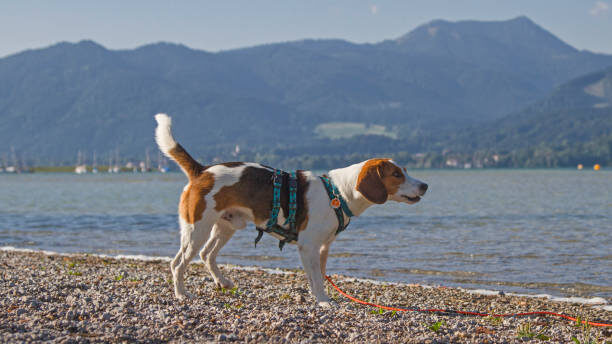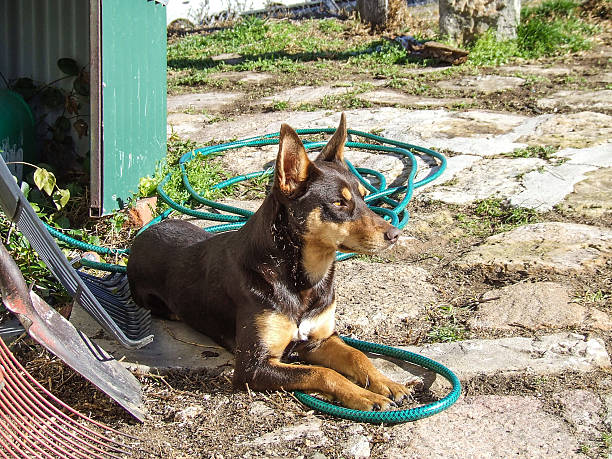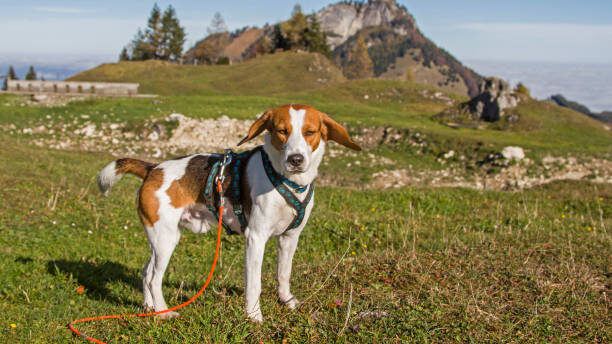A tie-out cable is a fantastic option when it comes to giving your furry friend some outdoor freedom while keeping them safe. But how do you choose the right length? The answer isn’t one-size-fits-all—your dog’s breed, size, and personality all play a role. Let’s dive into the best lengths for dog tie-out cables and some tips for various breeds to ensure they enjoy their time outside while staying secure!

Why Tie-Out Cables?
Before we dive in, let’s take a quick look at why you might want to use a tethered cable. Some people believe that cable dog ties are harmful to dogs. In fact, dog cables themselves are harmless, they just need to be used with moderation. Dog cables allow your dog to explore a designated area, and they are more secure than a typical leash, so you don’t have to worry about your dog escaping or getting into trouble. They are perfect for picnics, camping trips, or even just relaxing in the backyard. With the right length, your dog can enjoy the fresh air while you can relax, knowing they are safe.

The Perfect Length for Tie-Out Cables
Here’s a simple chart outlining the best lengths for dog tie-out cables based on breed size, along with tips for each category:
| Breed Size | Recommended Cable Length | Tips |
|---|---|---|
| Small Breeds | 10 to 15 feet | Keep it short to reduce entanglement; perfect for sniffing around. |
| Medium Breeds | 15 to 25 feet | Provides room to explore; ensure supervision to prevent wandering. |
| Large Breeds | 25 to 30 feet | Allows for active movement; choose durable materials to withstand pulling. |
| Extra Large Breeds | 30 feet or more | Offers ample space for larger dogs; use heavy-duty cables for safety. |
Small Breeds (Up to 25 lbs)
For our tiny friends like Chihuahuas and Dachshunds, a tie-out cable that’s 10 to 15 feet long is usually sufficient. Small dogs don’t require a lot of space to roam, and this length provides just enough room for them to sniff around and enjoy their surroundings without straying too far. Plus, shorter cables reduce the risk of entanglement, keeping your little one safe and sound.

Medium Breeds (25-50 lbs)
Medium-sized dogs such as Beagles and Cocker Spaniels benefit from a tie-out cable that’s 15 to 25 feet long. This range allows them to explore more while still being manageable. Remember, medium dogs are often quite curious, so a little extra length can help satisfy their adventurous spirits while keeping them within sight.

Large Breeds (50-90 lbs)
For larger pups like Labrador Retrievers and German Shepherds, aim for a cable length of 25 to 30 feet. Larger breeds thrive on exploration and need room to stretch their legs. Just make sure the cable is strong enough to withstand their weight and pulling power. Opt for durable materials to ensure safety and longevity.

Extra Large Breeds (Over 90 lbs)
If you have a gentle giant like a Great Dane or Mastiff, you’ll want a tie-out cable that’s at least 30 feet long. These dogs need space to move around comfortably, but it’s crucial to keep them contained. Always choose a heavy-duty cable made from robust materials, as their strength is vital for a secure setup.

Breed-Specific Tips
1. Bouncy Breeds (e.g., Jack Russell Terriers)
If your dog is full of energy and loves to bounce around, consider a tie-out with some elasticity. This can help absorb sudden movements, preventing injury. A length of 15 to 20 feet should do the trick!
2. Scent Hounds (e.g., Basset Hounds)
Scent hounds love to follow their noses, so give them a bit more freedom with a 25-foot cable. Just be sure the area is free of any temptations that could lead them astray!

3. Working Breeds (e.g., Border Collies)
Border Collies and similar breeds are highly intelligent and active. They require mental stimulation and physical exercise, so consider a length of 30 feet or more, especially in a safe, fenced area. Adding toys or obstacles can make their time outside even more enjoyable!
4. Senior Dogs (All Breeds)
For older dogs, a shorter cable of 10 to 15 feet can be beneficial. They may not have the same energy levels as they once did, so keeping them closer to you while still giving them room to move can provide comfort and security.

Safety First!
Regardless of the length you choose, safety is paramount. Here are some essential safety tips:
- Supervise: Always keep an eye on your dog when they’re tied out. Even the best tie-out systems can have issues if left unattended.
- Choose the Right Spot: Find a secure area free from hazards like sharp objects or potential escape routes. A shaded spot is also a great choice to keep your pup cool.
- Rotate Locations: If you frequently use a tie-out, rotate the locations to prevent wear on the grass or landscaping and give your dog a fresh environment to explore.

Conclusion
When choosing the right tether length for your dog, you can consider the size or breed of your dog. The right dog tether cable will give your dog the freedom to move around while ensuring their safety. Remember to supervise your dog and choose a safe tether location so that both of you can enjoy your outdoor adventure without worries!
So, grab a tether, head to your favorite outdoor spot, and let your dog enjoy the outdoors safely! Happy exploring!
